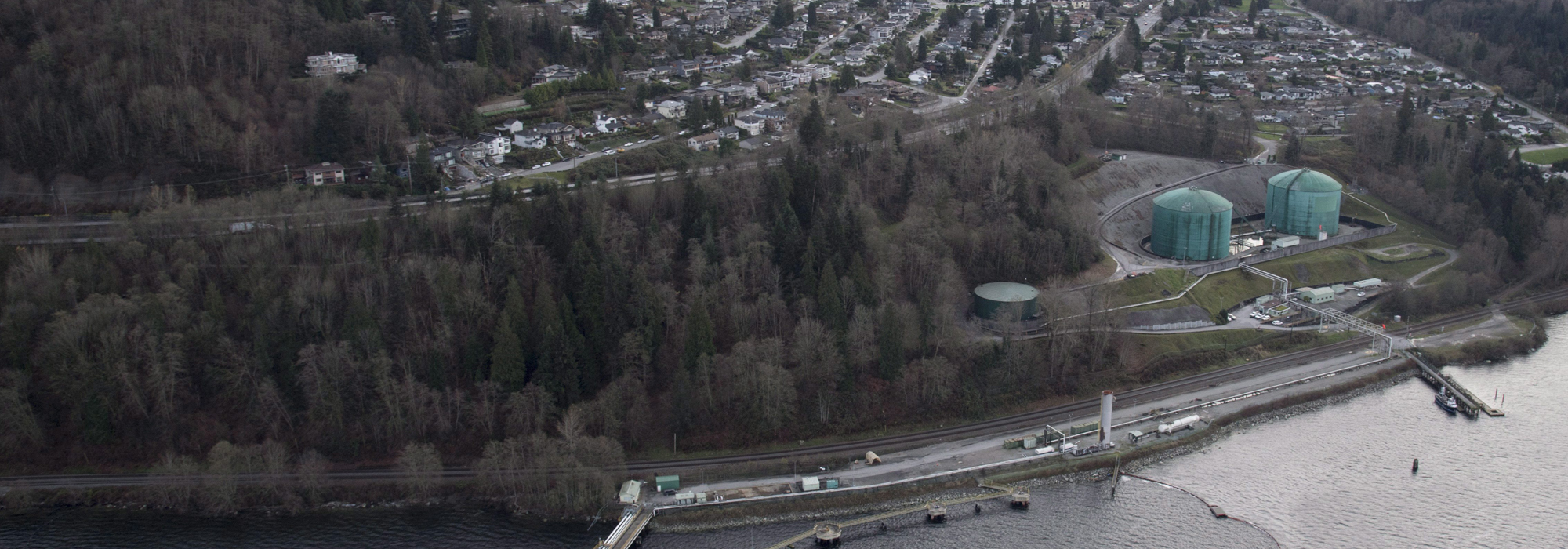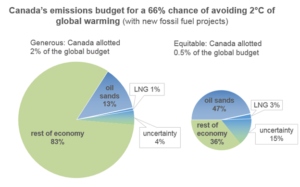
The Trudeau government has embarked on a grand political compromise between fighting climate change and supporting western Canada’s fossil fuel industry. It is hoping that advancing a national climate policy, which includes creating a price on carbon, phasing out coal power, and enacting methane controls, will provide the political capital to approve new pipeline capacity.
But while the political math may work; the actual math for meeting our international emissions targets does not.
Consider the upstream emissions associated with the now approved tripling of the capacity of the TransMountain pipeline, which brings bitumen from Alberta to the port in Burnaby, BC. The level of emissions will depend largely on the effect of additional pipeline capacity on upstream oil operations. If the new pipeline capacity is filled only by the volume of bitumen currently transported by rail, oil-sands emissions will not increase but will become “locked” at near today’s level of 62 Mt CO2e per year throughout the operational lifetime of the pipeline. If the expanded pipeline is filled entirely with additional production, emissions from the oil sands will increase by 13 to 15 Mt CO2e per year above today’s levels, according to the recent assessment from Environment and Climate Change Canada.
We can evaluate the compatibility of this expanded production with Canada’s share of the remaining global carbon “budget.” As I have outlined in another Policy Options article, the Intergovernmental Panel on Climate Change has been able to estimate how much carbon the world has left to burn before having a high probability of passing a given temperature threshold.
There has been no international consensus on whether you divide the remaining global carbon pie or carbon budget based on each country’s present-day emissions (which gives Canada a generous slice but is unfair to the developing world) or on population (which is more equitable but provides Canada with a much smaller slice).
The left-hand pie in the figure below shows Canada’s share of the global carbon budget based on our current slice (2%) of global emissions. In this generous case, oil-sands emissions over 30 years of operation of the expanded TransMountain pipeline would consume 11-13% of Canada’s remaining carbon allotment. The fraction increases to 12-15% if upstream emissions from the recently approved LNG facility are added, and 13-17% with the just-approved replacement of the Enbridge line 3 pipeline. The national emissions targets for the years 2030 and 2050 are roughly compatible with this “generous” share for Canada.
Even this “generous” scenario would place a heavy, possibly unrealistic, burden on the rest of the economy to reduce emissions. With oil-sands and LNG emissions as high as or higher than they are today, emissions from all other sectors would need to decrease by 35-38% below today’s levels in order for Canada to stay below the 2030 target of 30% below 2005 levels. The change would need to be even more dramatic if the Keystone XL pipeline is also constructed, as may be the wish of President Elect Donald Trump.
The broader problem is that if high-emitting countries like Canada claim a share of the global carbon budget based on their current emissions, very little of the global “carbon budget” is left for the developing world to use. This approach is therefore not a realistic path toward avoiding global warming of 2°C or more.
The more globally equitable way to calculate Canada’s share of the global carbon budget is to base it on our share (0.5%) of the world’s population, as in the right-hand pie in the figure. In this case, Canada’s carbon budget would be one-quarter the size as in the generous scenario. Oil-sands emissions locked in by the TransMountain pipeline expansion could then claim 40 to 49% of our much smaller allotment. The fraction increases to 49-63% with both the LNG facility and the line 3 upgrade, requiring other economic sectors to make dramatic emissions cuts if Canada is to stay within its carbon budget.
The scientifically and politically realistic path to avoiding 2°C of global warming lies somewhere between the generous and equitable scenarios. The data suggest that even without the expanded pipeline capacity, it will be challenging for us to stay within our carbon budget. With the expanded capacity, we’re highly likely to break the bank. And the budget gets even smaller if we try to avoid the lower 1.5°C warming threshold also listed as an aspiration in the Paris Climate Agreement.
To make up for a carbon budget deficit, we most likely will need to purchase international emissions credits. The alternative is to pin our hopes on unproven “negative” emissions technologies that suck CO2 out of the air, or on forest and land management, a risky proposition given the potential for large unpredictable carbon losses due to fires, pest outbreaks, and other extreme events. Justin Trudeau’s government has been at the forefront of recent negotiations to establish an international carbon market, likely for this very reason.
The potential cost of credits raises further questions about the wisdom of expanding oil-sands operations during a period of national emissions restrictions. For example, the Deep Decarbonization Pathways Canada Project estimates that the proposed federal and provincial climate policies leave Canada 68 Mt CO2e per year short of our 2030 target. If the international carbon price is on the scale of Canada’s price — set to reach $50 per ton in 2022 — emissions credits would cost $3.4 billion per year by 2030. Purchasing international credits would mean that some of the domestic carbon price revenue would effectively be leaving the country instead of encouraging low-carbon developments at home.
This expenditure would be in addition to Canada’s fair share — estimated at US$4 billion per year — of the US$100 billion in funding the developed world promised to help the developing world respond to climate change. Although this total can include private funds like investment in low-carbon technology, public funds will be expected to support adaptation measures. The federal government’s current commitment of C$0.8 billion per year through 2021 can be considered the floor for international climate aid going forward.
As a Canadian who is proud of our country’s moderation during a time of rising extremism around the world, I appreciate the government’s effort to find a middle ground on climate change and energy.
The numbers, however, are the numbers. If we are serious about our commitment to fighting climate change, we need to talk not about new pipeline capacity, but about managing the long-term decline of oil-sands emissions over the next few decades. Otherwise, we’ll blow our budget.
Photo: Jonathan Hayward/The Canadian Press
Do you have something to say about the article you just read? Be part of the Policy Options discussion, and send in your own submission. Here is a link on how to do it. | Souhaitez-vous réagir à cet article ? Joignez-vous aux débats d’Options politiques et soumettez-nous votre texte en suivant ces directives.








